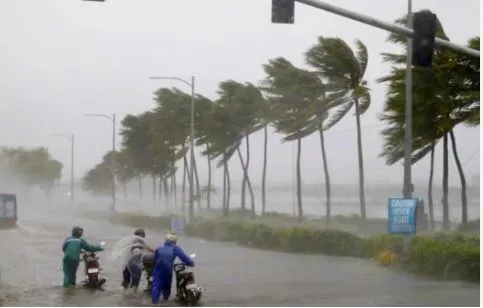

Bhubaneswar, Oct 21: The fateful October 1999 has left a major scar mark in the Odisha history following the traumatic Super Cyclone. The devastative phenomenon began with unusual & unseasonal shower clinging gusting wind that later turned into fatal whirlwind in bringing largescale devastation in the coastal lifeline.
As the then IMD newscast predicted, a mere low pressure over the Bay of Bengal was to hit the Odisha & Andhra Pradesh coastal-line with light or moderate rain. However, the Super Cyclone 1999 brought about hurricanic savage across Odisha.
The October 2025 i.e after 26 years of the Super Cyclone in Odisha, is going to encounter two Low Pressure systems consecutively. According to the IMD forecast, one of the vital low pressure systems is going to be formed over the Bay of Bengal on October 29-30. Comparatively with the first one that’s predicted to be formed by October 22-23, the system on the 29 is expected to trigger heavy to heavy rain. Amid the two systems another low pressure is likely to be formed over the BoB during 25-26 October.
Apart from it, the tranquillity of the Bay of Bengal is feared to be much disturbed especially with bringing sporadiac and violent effects along the Andhra Pradesh-Odisha coastal line.
Similarly, the Global Forcast System (GFS) weather Model in the US has indicated towards two powerful low pressure systems over the Bay of Bengal that might turn into depression, deep depression and Cyclonic. It may turn slightly hurricanic for Odisha, Andhra Pradesh and Tamil Nadu, the model reportedly predicts.
Considering the ominous October 1999, the cyclone-prone Odisha coast is feared to witness another cyclone as two unusual Low Pressure systems to generate back-to-back this week.
If the devastative countdown of weather is now reviewed, the 22th October 1999 was almost a quite dry & humid day while the IMD assessed of a normal low pressure on the very next day over the Bay of Bengal. However, the IMD first detected the storm as a low-pressure area on October 24.
The first "Alert Bulletin" for the impending cyclone was issued on October 27, two days before the calculated landfall. By October 28, the cyclone had rapidly intensified and the IMD warned of its severe nature.
According to the latest inputs on Tuesday, two separate low-pressure areas are likely to develop over the Bay of Bengal.As a result, southern Odisha is expected to experience heavy to very heavy rainfall in the coming days.
Based on the current meteorological projections, red alerts have been issued for southern Odisha districts, while orange alerts remain in effect for parts of the coastal belt.
The IMD has also warned of widespread rainfall, thunderstorms, and gusty winds likely to continue through the week.
Meanwhile, weather experts predict that Odisha may witness a cyclone by the end of October with emergence of a moderate ‘La Nina’ phenomenon.
It’s because,the La Nina, a cooling phase of the Pacific Ocean, influences the Bay of Bengal by raising sea surface temperatures and moisture, creating an environment conducive to more frequent and intense cyclones in the region.
India Meteorological Department (IMD) Director General who is considered as a Cyclone Man Mrutyunjay Mohapatra said while neutral El Nino-Southern Oscillation (ENSO) conditions currently prevail, a shift toward ‘La Nina’, may supplement to a tropical storm centering the Bay of Bengal.
As such, the Bay of Bengal has been proved as the epicenter of most of the intense cyclones ever taken place, significantly matter to Odisha. It include the 1999 Super Cyclone that devastated Odisha and the Severe Cyclone Dana in 2024, both wreaked devastation in the month of October.
Apart from it, extremely Severe Cyclone Hudhud in 2014, Bulbul in 2019 and Jawad in 2021 underlined the wrath of low pressure-triggered cyclones with the coastal Odisha as one of the most susceptible spots to be worst effected by a destructive fury of nature.
Meanwhile, a new low-pressure system has formed over the westcentral and adjoining northwest Bay of Bengal off north Andhra Pradesh and south Odisha coasts. It is expected to bring heavy rains to Koraput, Malkangiri, Nabarangpur and Kalahandi districts on Saturday.
Underlining the climatic concern looming over Odisha and the vulnerable Odisha-Andhra Pradesh coastal line, Director, Center for Environment & Climate(CEC), SoA Dr. Sarat Chandra Sahu said, the first LPA is likely to be formed over the BoB in the intervening 22-23 October, may not have any violent effect. However, most of the Odisha districts might receive moderate or heavy rain, that’s quite unprecedented and unwelcoming amid the harvest season, following the withdrawal of monsoon from the state.
However, on the looming cyclonic development, the climatologist opined that the precise calculations on the very effects of the subsequent back-to-back low pressure systems would be more obvious by October 27.